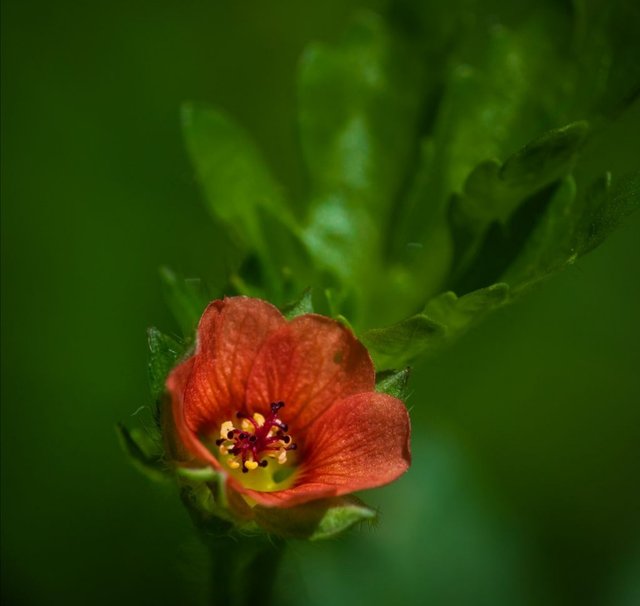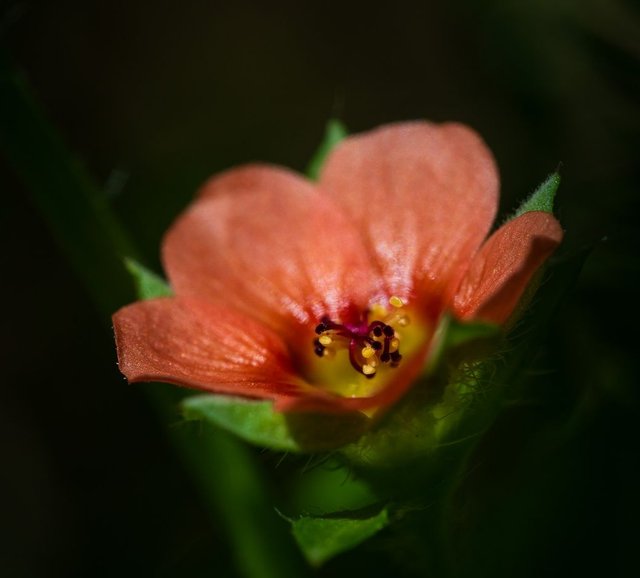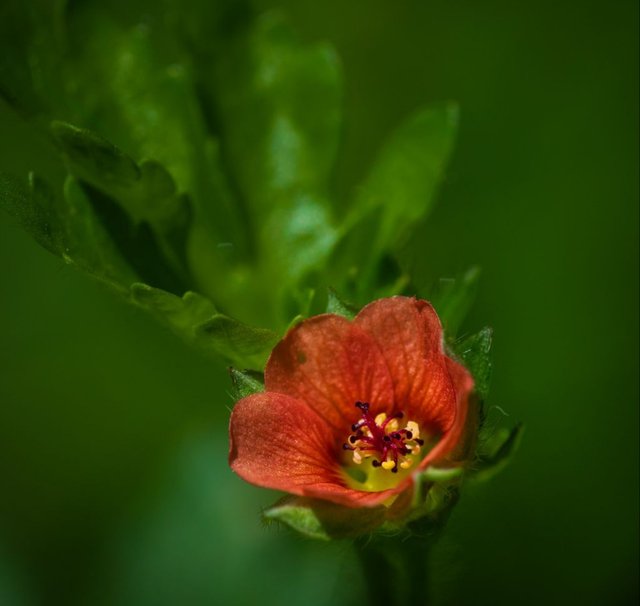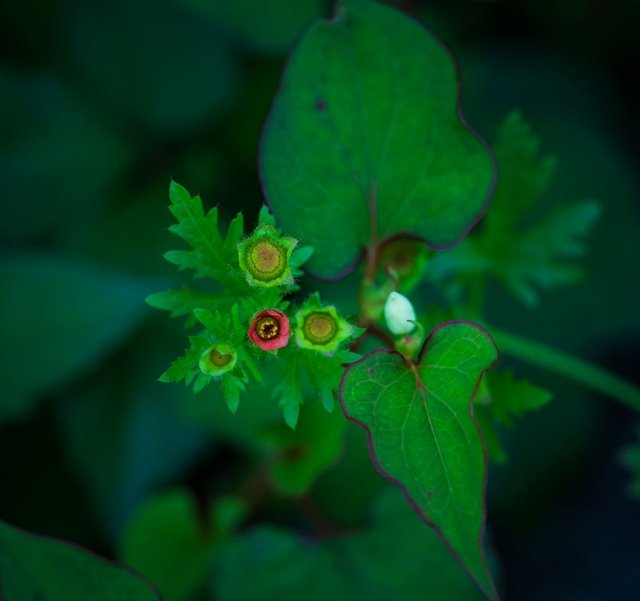Beautiful Colour Modiola Flower
Modiola: The Underrated Beauty of the Plant World
When we think of flowers, our minds often wander to roses, tulips, or daisies, each with their own vibrant colors and recognizable forms. However, in the quieter corners of the plant kingdom lies a lesser-known but equally enchanting species—Modiola. This humble plant, though not widely celebrated, carries with it a charm that speaks to the beauty found in simplicity and resilience.
Botanical Background
Modiola caroliniana, commonly known as the "Carolina Bristle Mallow," is a perennial herb that belongs to the Malvaceae family, the same family that includes hibiscus, cotton, and okra. Native to South America, Modiola has spread across the world, finding a home in the warmer climates of North America, Australia, and other regions. Its widespread presence can be attributed to its hardy nature, capable of thriving in various environments, from lawns and roadsides to disturbed areas.
Physical Characteristics
Modiola is often considered a weed by gardeners and lawn enthusiasts due to its creeping habit and ability to spread rapidly. However, when observed closely, the plant reveals a delicate beauty. Its trailing stems, which can reach lengths of up to two feet, bear small, deeply lobed leaves that are reminiscent of those found on maple trees, albeit on a much smaller scale.
The flowers of Modiola are particularly striking. Although small—typically less than an inch in diameter—they are a vivid shade of red or pink, with a bright yellow center that attracts pollinators. These flowers, often solitary, emerge from the leaf axils and bloom throughout the warmer months. The contrast between the vibrant flowers and the lush green foliage creates a visual appeal that is subtle yet captivating.
Ecological Significance
Beyond its aesthetic appeal, Modiola plays an important role in its ecosystem. As a ground cover plant, it helps prevent soil erosion by stabilizing the soil with its extensive root system. Moreover, its flowers provide nectar and pollen for various pollinators, including bees and butterflies, contributing to the biodiversity of the area in which it grows.




Thanks For Reading
Device Information
| Device | cannon eos 600D |
|---|---|
| Lens | 55-250 zoom leans |
| Location | Myanmar |
